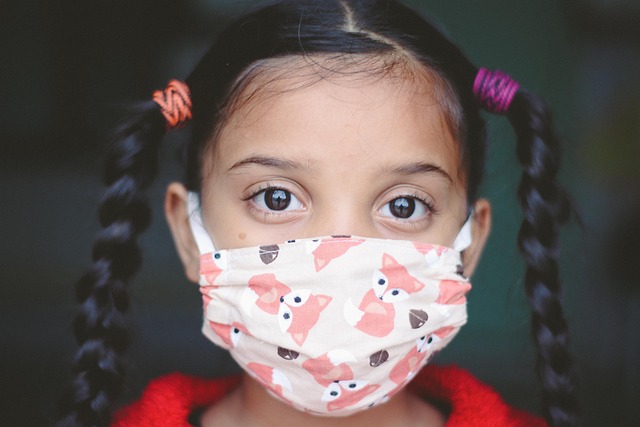The Department of Health and Human Services (DHS) plays a crucial role in protecting vulnerable children through DHS child welfare cases. These cases address abuse, neglect, and harm, involving investigations, resource allocation, and tailored interventions. The process starts with credible allegations, includes thorough assessments, collaborative decision-making, and interventions like temporary removal or in-home services aimed at family reunification while ensuring child safety. Protective services focus on safeguarding children by identifying risks, providing immediate assistance, and offering long-term strategies. Case managers coordinate resources, empower parents through education and skill-building, and work towards stable, permanent placements for children in need.
In today’s digital era, understanding DHS child welfare cases is paramount for fostering safe and supportive communities. This comprehensive guide delves into the intricate world of protective services, offering valuable insights on key aspects such as case management, intervention strategies, and ensuring safety net for vulnerable populations. By exploring these critical areas, we aim to equip professionals and folks alike with essential knowledge for navigating DHS child welfare cases effectively.
- Understanding DHS Child Welfare Cases: An Overview
- Roles and Responsibilities of Protective Services
- Identifying Risks and Vulnerable Populations
- Intervention Strategies for At-Risk Families
- Case Management and Support Services
- Ensuring Safety, Permanency, and Well-being in Foster Care
Understanding DHS Child Welfare Cases: An Overview

In the complex landscape of child protection, understanding DHS child welfare cases is paramount. The Department of Health and Human Services (DHS) plays a crucial role in ensuring the safety and well-being of vulnerable children across the nation. These cases encompass a wide range of situations where DHS intervenes to protect minors from abuse, neglect, or any form of harm. It involves a multi-faceted approach, including investigations, resource allocation, and support services to both children and their families.
DHS child welfare cases are initiated when credible allegations of child maltreatment are received, leading to thorough assessments and evaluations. Social workers and professionals within DHS work collaboratively to determine the best course of action, which may include removing a child from their home temporarily or providing in-home services to keep the family together while addressing safety concerns. The ultimate goal is to promote stability, heal trauma, and foster healthy development for each child involved.
Roles and Responsibilities of Protective Services

Protective services play a crucial role in ensuring the safety and well-being of children within DHS child welfare cases. Their primary responsibility is to intervene in situations where children are at risk of abuse, neglect, or exploitation. This involves conducting thorough investigations, assessing family environments, and determining the best interests of the child. Protective service workers collaborate closely with law enforcement, healthcare providers, and other agencies to provide immediate support and long-term solutions.
These services have a multifaceted mandate, including developing safety plans, offering family counseling, and arranging temporary or permanent placements for children in need. They work diligently to maintain open lines of communication with families, advocating for the child’s rights while guiding parents or guardians toward resources and interventions that can help them regain custody and provide a stable home environment.
Identifying Risks and Vulnerable Populations

Identifying risks and vulnerable populations is a critical step in child welfare and protective services, as it forms the foundation for effective interventions. In the context of DHS child welfare cases, recognizing potential hazards and at-risk groups involves assessing various factors such as family dynamics, economic struggles, domestic violence, substance abuse, and mental health issues. These challenges often intersect, creating complex situations that require tailored support.
Professionals in this field must stay vigilant in spotting signs of abuse, neglect, or exploitation within communities. Targeted populations may include children living in poverty, those with disabilities, first-generation immigrants, or those experiencing homelessness. Early identification allows for prompt intervention and the provision of necessary resources, ensuring the safety and well-being of vulnerable children.
Intervention Strategies for At-Risk Families

At-risk families often require a multi-faceted approach to intervention, and child protective services (CPS) play a vital role in providing support and safeguarding children within these households. The DHS child welfare cases emphasize a range of strategies to address the unique needs of each family. One key method is strengthening family strengths and resources through education and skill-building workshops, which empower parents with effective parenting techniques and coping strategies. These programs can help families develop resilience and improve their overall well-being.
Additionally, early intervention services are crucial in preventing further issues. This may include home visiting programs where trained professionals offer guidance and support directly within the family’s home. Such interventions aim to strengthen parent-child bonds, promote healthy development, and proactively address any emerging risks, ensuring a safer and more stable environment for children.
Case Management and Support Services

In the complex landscape of DHS child welfare cases, effective case management and support services are pivotal to ensuring the best outcomes for involved children and families. These services play a crucial role in navigating the intricate web of legal processes, social services, and emotional support necessary to address the unique challenges presented by each case. Professional case managers act as advocates and guides, coordinating resources and interventions to stabilize homes and foster healthy development.
Support services extend beyond traditional case management, encompassing a range of specialized programs designed to fortify family resilience. This includes access to counseling, education and employment assistance, and community-based organizations that offer critical wrap-around care. By leveraging these comprehensive services, child welfare agencies can address underlying issues, strengthen family bonds, and ultimately work towards safe, permanent placements for children in need.
Ensuring Safety, Permanency, and Well-being in Foster Care

In foster care, the primary focus is on ensuring the safety and well-being of children who have been removed from their homes due to abuse or neglect. This involves a multi-faceted approach where child welfare services work tirelessly to create a secure environment. The U.S. Department of Health and Human Services (DHS) plays a pivotal role in overseeing child welfare cases, guaranteeing that every child in foster care has access to essential resources and support systems.
Permanency is another key aspect, aiming to provide children with stable homes where they can thrive. DHS child welfare cases strive to find suitable permanent placements, whether through reunification with their biological families, adoption, or long-term foster care. By prioritizing the child’s emotional and psychological stability, these services work towards fostering a sense of belonging and enhancing their overall well-being.






